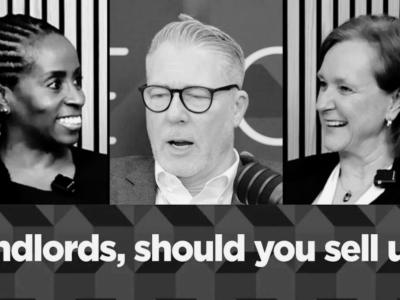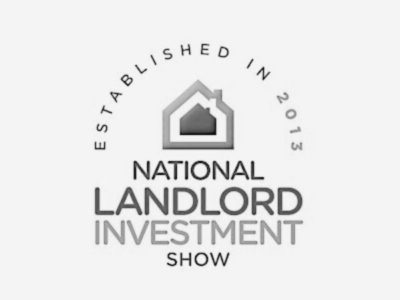The latest Prime London Demand Index by leading lettings and estate agent, Benham and Reeves, has shown that homebuyer interest in London’s high-end market has increased 5.8% annually for homes listed a £2m and above and 1.8% across the £10m+ market.
The index by Benham and Reeves analyses the ratio of homes listed as sold subject to contract or under offer as a percentage of all homes for sale across the prime London market, highlighting where high-end homebuyer demand is at its highest, as well as how this demand has changed.
£2m+ Market
While demand across the prime London market has remained largely static between Q2 and Q3 of this year (-0.7%), on an annual basis, there has been a 5.8% increase for homes across London’s high-end market.
Although lockdown restrictions have all but disappeared, it’s clear the pandemic is still influencing homebuyer preference at this level of the market.
Wandsworth has seen the largest annual uplift in demand at 31.6%, while Wimbledon also ranks high with a 26.5% annual increase, as does Highgate (21.5%).
Wapping (14.7%), Putney (13.8%), Islington (12.8%), Fulham (11.6%), Richmond (10.5%), Notting Hill (9.4%) and Chiswick (8%) also rank amongst the areas to have seen the largest annual uplift in homebuyer demand for homes prices at £2m or more.
£10m+ Market
Homebuyer demand across the very top tier of the London property market has again remained largely static between Q2 and Q3 (0.1%) but has increased 1.8% year on year.
Wimbledon also tops the table where super-prime property demand is concerned.
Having seen no demand for homes at £10m+ over the last year, the area has seen a 66.7% uplift in Q3 of this year – the largest annual increase of all areas.
However, it’s London’s more traditionally prime areas that account for the largest degree of market activity at the £10m+ threshold.
Notting Hill has seen demand increase by 22.1% annually, while Holland Park has also seen a double-digit uplift at 12.5%.
Kensington has seen an annual increase of 7.3% in buyer demand for homes at £10m or more, with Hampstead (6.3%), Victoria (3.4%), Belgravia (3.3%), Mayfair (2.9%), Chelsea (1.7%) and St John’s Wood (1.4%) also seeing some of the largest annual increases in super-prime homebuyer demand.
Director of Benham and Reeves, Marc von Grundherr, commented:
“We’re certainly not seeing a fully rejuvenated prime London market at present and the pandemic continues to play a part both in terms of where buyers are transacting, as well the ongoing absence of foreign demand due to travel complications.
However, what we are seeing are strong signs that the market is starting to pick back up.
Those areas offering a greater abundance of larger homes with more green space are still performing well but we’re now seeing demand increase in the more traditional heartlands of the prime market where there was previously little to no interest at all.
As we ease back to a full state of normality, it’s very likely that these green shoots will continue to blossom.”
| Table shows current buyer demand for homes at £2m+ and the quarterly and annual change | ||||
| Area | Prime category | Q3, 2021 | Quarterly Change | Annual change |
| Wandsworth | Prime SW London | 54.0% | 3.3% | 31.6% |
| Wimbledon | Prime SW London | 53.1% | 3.4% | 26.5% |
| Highgate | Prime NW London | 47.6% | 8.3% | 21.5% |
| Wapping | Prime E London | 23.8% | 8.4% | 14.7% |
| Putney | Prime SW London | 37.1% | -6.5% | 13.8% |
| Islington | Prime N London | 36.5% | -1.3% | 12.8% |
| Fulham | Prime SW London | 25.0% | -2.8% | 11.6% |
| Richmond | Prime SW London | 38.7% | -2.5% | 10.5% |
| Notting Hill | Prime C London | 25.2% | -4.6% | 9.4% |
| Chiswick | Prime SW London | 43.9% | -0.8% | 8.0% |
| Barnes | Prime SW London | 44.3% | -1.5% | 7.1% |
| Pimlico | Prime C London | 14.1% | 1.4% | 6.6% |
| Belgravia | Prime C London | 14.7% | 0.6% | 5.6% |
| Chelsea | Prime C London | 14.9% | -1.0% | 5.2% |
| Victoria | Prime C London | 15.0% | 1.1% | 4.4% |
| Holland Park | Prime C London | 23.2% | -2.1% | 4.4% |
| Kensington | Prime C London | 16.6% | 0.3% | 3.0% |
| Mayfair | Prime C London | 5.0% | -2.2% | 0.5% |
| Knightsbridge | Prime C London | 15.2% | 3.1% | 0.4% |
| Regents Park | Prime C London | 10.0% | 2.0% | -0.5% |
| St John?s Wood | Prime C London | 11.3% | -2.4% | -0.9% |
| Clapham | Prime SW London | 38.8% | -1.8% | -1.4% |
| Marylebone | Prime C London | 3.3% | -1.4% | -1.4% |
| Canary Wharf | Prime E London | 0.0% | -5.6% | -3.0% |
| Battersea | Prime SW London | 9.2% | -3.4% | -4.5% |
| Fitzrovia | Prime C London | 2.4% | -2.0% | -4.6% |
| Maida Vale | Prime C London | 14.1% | 0.8% | -7.7% |
| Hampstead Garden Suburb | Prime NW London | 10.2% | -9.3% | -11.6% |
| Overall | 23.1% | -0.7% | 5.8% | |
| Data sourced from Rightmove for Q3, 2021 | ||||
| Table shows current buyer demand for homes at £10m+ and the quarterly and annual change | ||||
| Area | Prime category | Q3, 2021 | Quarterly Change | Annual change |
| Wimbledon | Prime SW London | 66.7% | 66.7% | 66.7% |
| Notting Hill | Prime C London | 25.0% | 15.9% | 22.1% |
| Holland Park | Prime C London | 14.3% | -6.8% | 12.5% |
| Kensington | Prime C London | 10.2% | 0.0% | 7.3% |
| Hampstead Garden Suburb | Prime NW London | 6.3% | -17.3% | 6.3% |
| Victoria | Prime C London | 3.4% | -6.9% | 3.4% |
| Belgravia | Prime C London | 3.3% | -7.0% | 3.3% |
| Mayfair | Prime C London | 2.9% | 2.9% | 2.9% |
| Chelsea | Prime C London | 7.9% | -0.7% | 1.7% |
| St John?s Wood | Prime C London | 4.3% | -2.5% | 1.4% |
| Fitzrovia | Prime C London | 0.0% | 0.0% | 0.0% |
| Maida Vale | Prime C London | 0.0% | 0.0% | 0.0% |
| Pimlico | Prime C London | 0.0% | 0.0% | 0.0% |
| Highgate | Prime NW London | 0.0% | 0.0% | 0.0% |
| Battersea | Prime SW London | 0.0% | 0.0% | 0.0% |
| Putney | Prime SW London | 0.0% | 0.0% | 0.0% |
| Fulham | Prime SW London | 0.0% | -50.0% | 0.0% |
| Knightsbridge | Prime C London | 5.7% | -0.5% | -0.2% |
| Regents Park | Prime C London | 8.3% | 0.0% | -4.2% |
| Marylebone | Prime C London | 2.2% | -0.4% | -5.9% |
| Overall | 8.0% | 0.1% | 1.8% | |
| Data sourced from Rightmove for Q3, 2021 | ||||

























Comments